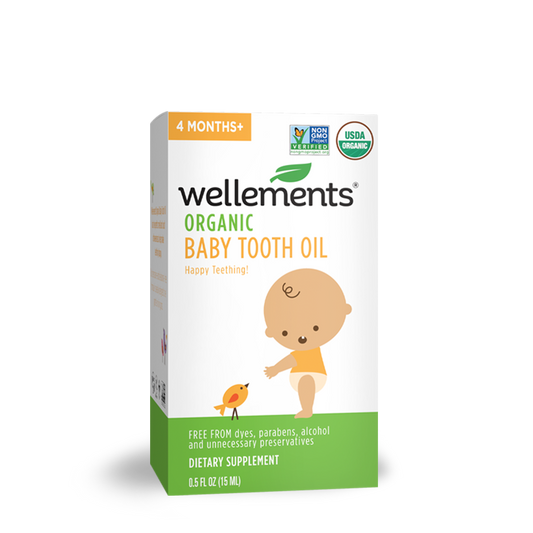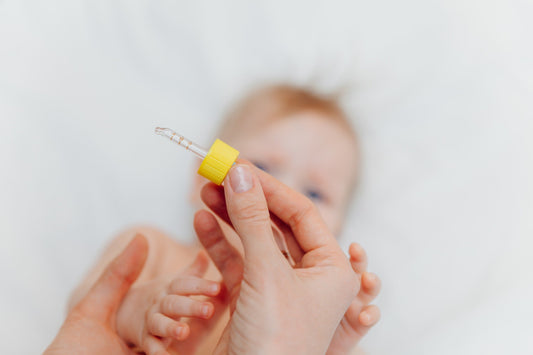Teething & Fevers: Is Your Baby Teething or Sick
| updated:Share

Most parents understand the challenges of teething. However, there is some confusion about teething and fevers for new parents, knowing when your baby is sick or not.
Why Babies Can Get a Fever When They are Teething
It is common for babies to experience a slight temperature increase when they begin teething, especially as their first teeth cut through the gum between the ages of four and six months. While often referred to as a teething fever, these minor temperature spikes typically do not meet the requirements or definition of a legitimate fever, defined as 100.4° F.
According to the American Academy of Pediatrics, the slight increase in temperature is likely due to gum inflammation. As the teeth force their way through the sensitive gum tissue, the baby's body releases an immune system response — all perfectly natural and expected, nothing to worry about.
Understanding the distinction between a “teething fever” and a real fever is necessary to ensure your child receives the best care and response time. It is not uncommon for a parent to mistake an actual fever for a teething fever, meaning a potential delay in seeking medical advice.
Beyond body temperature, there are several ways to tell if your baby is teething or sick. A teething child often displays a few telltale signs:
- Fussiness
- Cranky and crying more than normal
- Chews teething rings or other firm objects
- Drools a lot
- Might show signs of decreased appetite
A baby who is sick will often have a legitimate fever — 100.4° F or higher. They may also present with several other symptoms:
- Sneezing
- Coughing
- Rash
- Stuffy or runny nose
- Diarrhea
- Vomiting
How Long Do Teething Fevers Last
Parents will see the worst teething symptoms between six and 16 months of age, according to a study in the official journal of the AAP, Pediatrics. This proposed window correlates with the appearance of the child’s primary incisors and the first emergence of a “teething fever” or temperature spike.
The temperature spike is not long-lasting; it often develops about one day before the tooth’s eruption and disappears once it cuts through the gum. Unfortunately, there is not much, if anything, you can do to break a “teething fever.” It will typically go away or settle within a couple of days.
Tips for Finding Relief
In the pursuit of relief, a parent is willing to try anything to soothe their teething child, but be careful of what you try. Some commercial products like gels or teething tablets might contain ingredients like benzocaine — a numbing agent — or belladonna — a poisonous plant. The FDA suggests avoiding teething products containing these ingredients because of the potential for adverse side effects.
Instead, one of the best and safest approaches to soothing teething aches is applying gentle pressure on the gums. As a parent, you can do this by massaging your baby’s gums with a clean finger. If you prefer not to use your finger, consider purchasing a teething ring.
Another standard treatment for relief is the use of cool objects. Place a teething ring in the refrigerator until it is cool, or do the same with a wet washcloth if you do not have a teething ring.
A quick word of caution: do not place teething rings in the freezer. The frigid temperature could hurt your baby’s gums, and it is possible the ring could break open and leak.
For children at least six months of age, a doctor might recommend children's ibuprofen or acetaminophen to reduce pain or discomfort. However, always check with your pediatrician first.
If you are looking for a remedy to provide teething relief, Wellements® Organic Baby Tooth Oil is free of benzocaine and belladonna. It is also a vegan, gluten-free, and non-GMO product — only the best for your little one's health.
4.5 /
5.0
(77)
77
total reviews
Baby Tooth Oil
Sale price
$9.99
Sources:
https://pediatrics.aappublications.org/content/early/2016/02/16/peds.2015-3501



